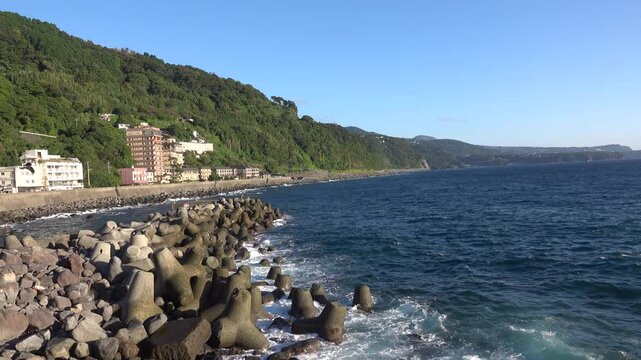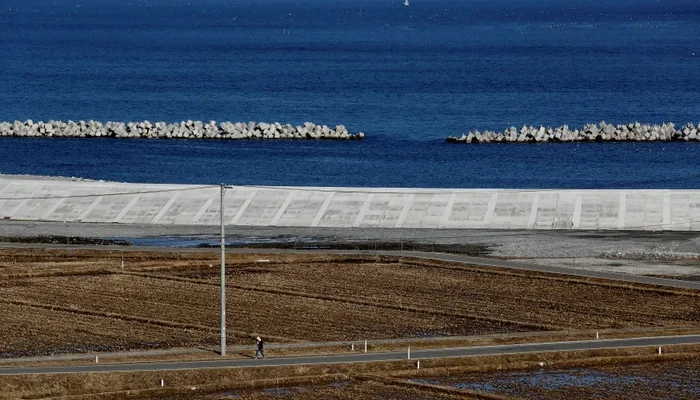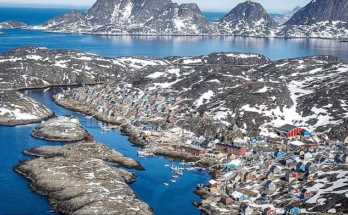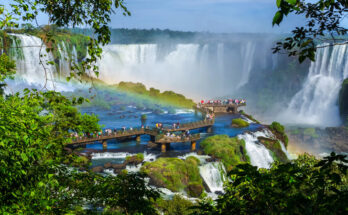In the wake of the devastating 2011 Tōhoku earthquake and tsunami, Japan faced an unimaginable task: rebuilding entire communities, restoring shattered lives, and ensuring that such a tragedy would never claim as many lives again. But in true Japanese spirit, the nation did not simply rebuild—it reimagined its relationship with the sea.
At the heart of this monumental effort stands the Great Tsunami Wall—a vast, unbroken line of defense that now stretches along 395 kilometers of Japan’s northeastern coastline. Rising up to 12.5 meters (over 40 feet) high, this immense structure is not only a feat of engineering but also a powerful symbol of collective determination and forward-thinking resilience.

The idea behind the wall is straightforward: to withstand future tsunamis and protect vulnerable coastal towns. Its concrete form acts as a physical barrier, absorbing and redirecting the destructive energy of incoming waves. But its presence is also deeply emotional—bringing peace of mind to residents who once watched their homes, families, and communities disappear under roaring water.

However, Japan didn’t rely solely on concrete and steel. Recognizing the limitations of hard infrastructure alone, the government and communities embarked on a dual approach that honors both technology and nature. Alongside the wall, an incredible nine million trees were planted across the coastline. These trees form a living barrier, designed to reduce the power of tsunami waves, prevent soil erosion, and offer additional layers of defense.
These coastal forests, made up of species like black pine and cherry trees, are more than just functional—they restore the natural beauty of the shoreline, reconnect people with the landscape, and act as carbon sinks that benefit the environment. In some areas, the trees echo ancient traditions: for centuries, groves were planted near temples and villages as spiritual protectors from natural disasters. Now, these forests are part of a modern revival of that wisdom, woven into contemporary disaster prevention.

This fusion of man-made fortification and ecological planning transforms the coastline into more than just a buffer zone. It becomes a living memorial—to those who lost their lives in 2011, to the villages that were washed away, and to the enduring spirit of communities who chose not only to survive but to thrive.
Still, the wall has sparked its share of debate. Critics argue that such a massive structure alters the landscape, obstructs ocean views, and creates a sense of disconnection between people and the sea—once central to daily life and local culture. Some fishing villages have expressed concern that the wall separates them from the waters that sustain their livelihoods.

Despite these concerns, the broader vision of the project remains clear: to create a coastline that is not only stronger, but smarter and more harmonious. Japan is continuously refining its disaster-prevention systems by integrating early warning technologies, evacuation routes, education programs, and sustainable urban planning into its coastal regions.
The Great Tsunami Wall and its accompanying green barrier represent a philosophy of balance—between innovation and tradition, defense and coexistence, fear and hope. Together, they form a promise to future generations: that Japan will never forget, never give up, and never stop striving for safety, beauty, and unity with nature.
As climate change intensifies natural disasters around the world, Japan’s model of resilience offers not just a wall, but a blueprint—a powerful example of how humanity can adapt, rebuild, and protect what matters most by working hand in hand with the environment.



